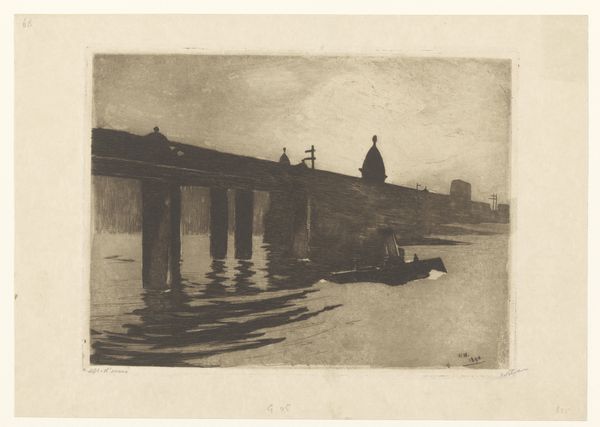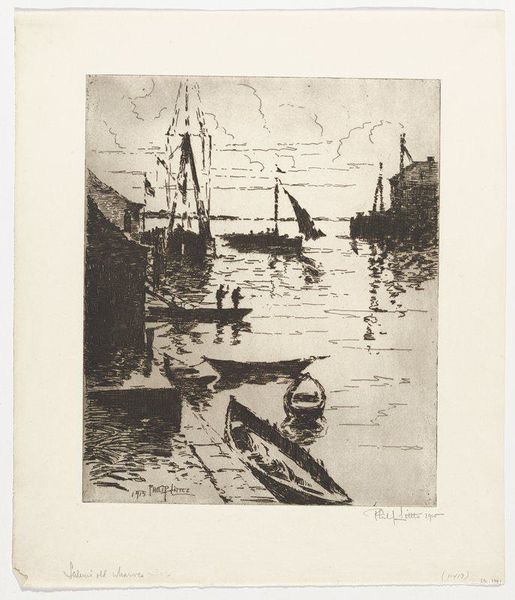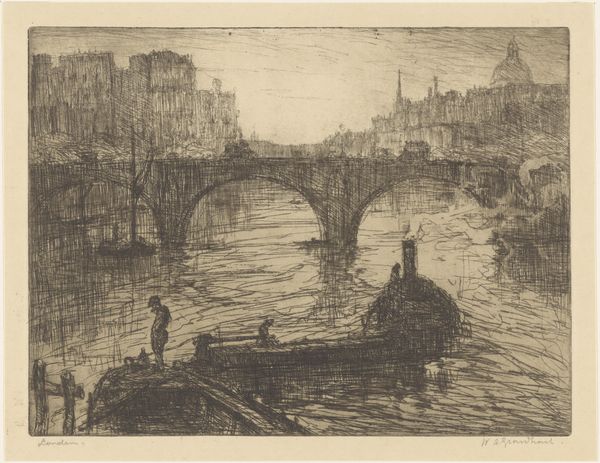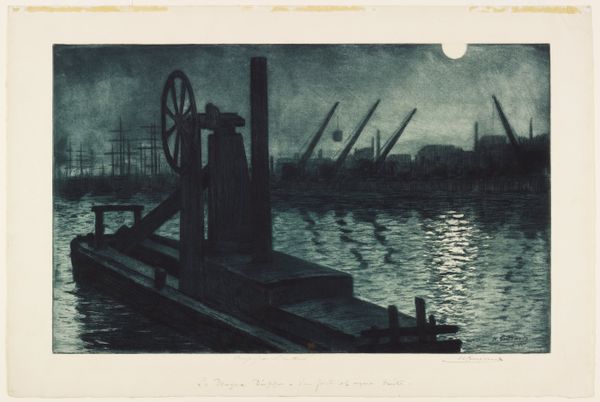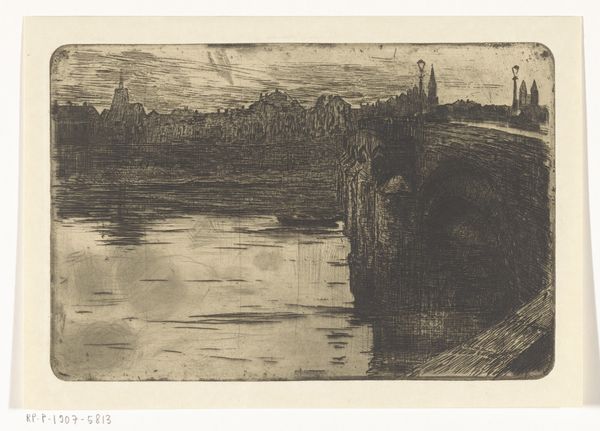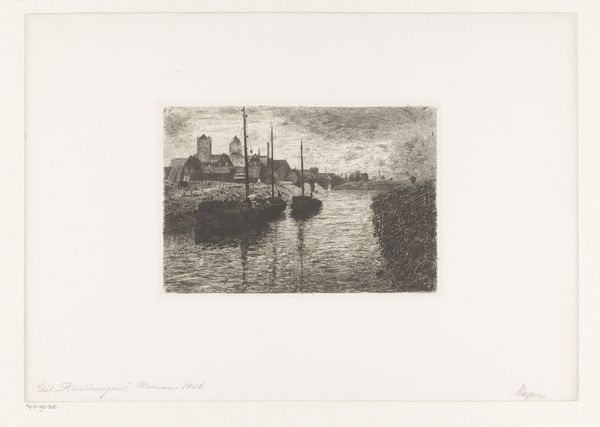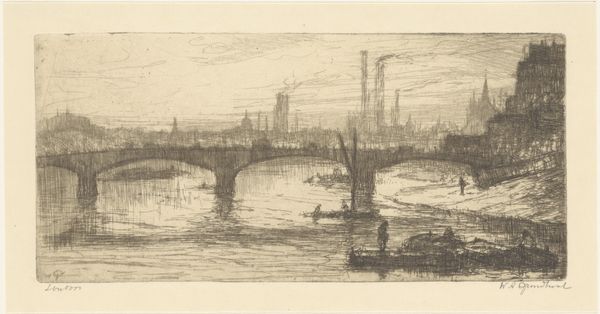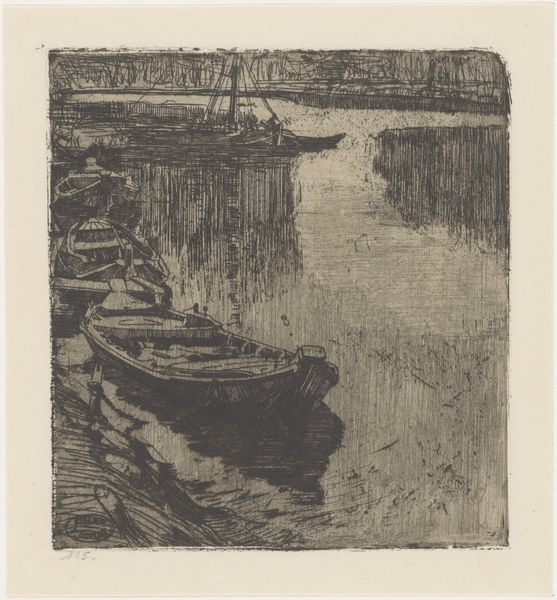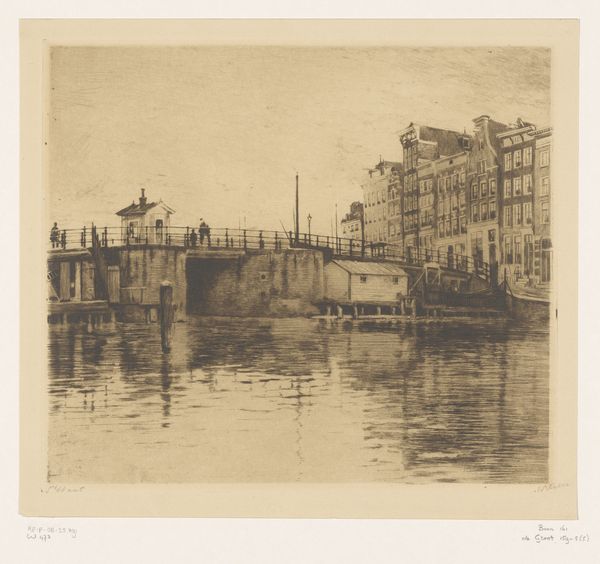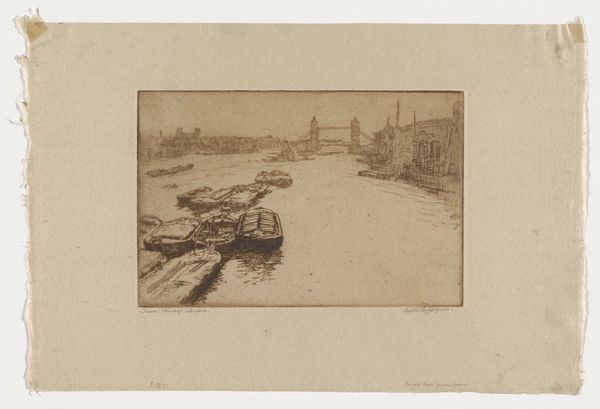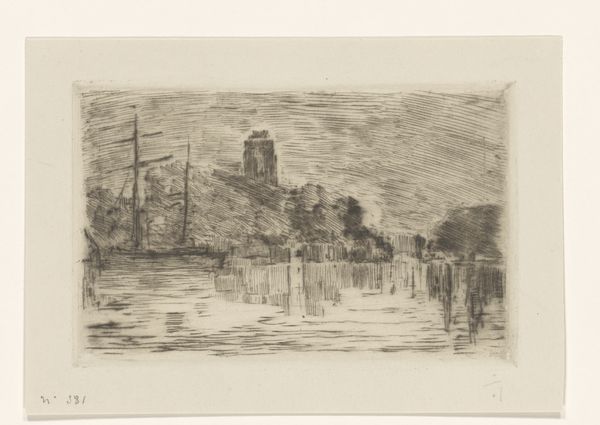
Dimensions: height 180 mm, width 240 mm
Copyright: Rijks Museum: Open Domain
Willem Witsen created this etching, titled "Ophaalbrug bij de Zandhoek in Amsterdam," with needle and acid in the late 19th or early 20th century. It presents a sombre view of Amsterdam’s Zandhoek district, known for its maritime activity. The artist’s choice of etching, a printmaking technique, aligns with the period’s interest in democratizing art. Prints could be reproduced and distributed more widely than unique paintings, making art accessible to a broader audience. Witsen belonged to a group of Dutch artists, writers and critics known as the Tachtigers. Reacting against what they saw as the stuffy, academic style of art that was popular in the Netherlands in the 1870s, the Tachtigers promoted naturalism and symbolism and advocated art for art’s sake. Here, Witsen doesn’t seem to be making any overt social statement, and perhaps the artwork’s meaning lies in its aesthetic qualities alone. To understand the social context of Witsen’s work better, one might consult period writings on art or study the records of exhibitions where his prints were displayed. Art, after all, exists within a web of cultural and institutional relationships, and it’s only by teasing these apart that we can start to get a sense of its meaning.
Comments
No comments
Be the first to comment and join the conversation on the ultimate creative platform.
